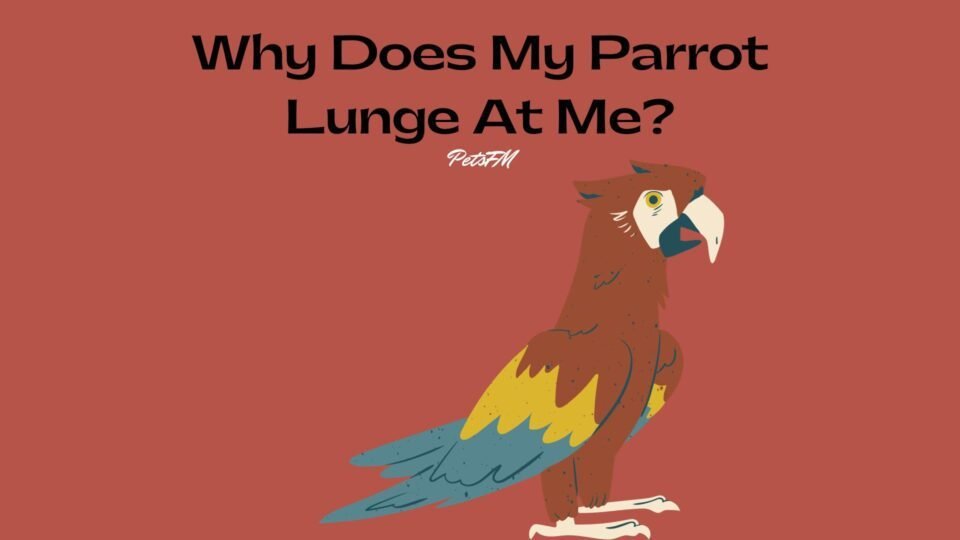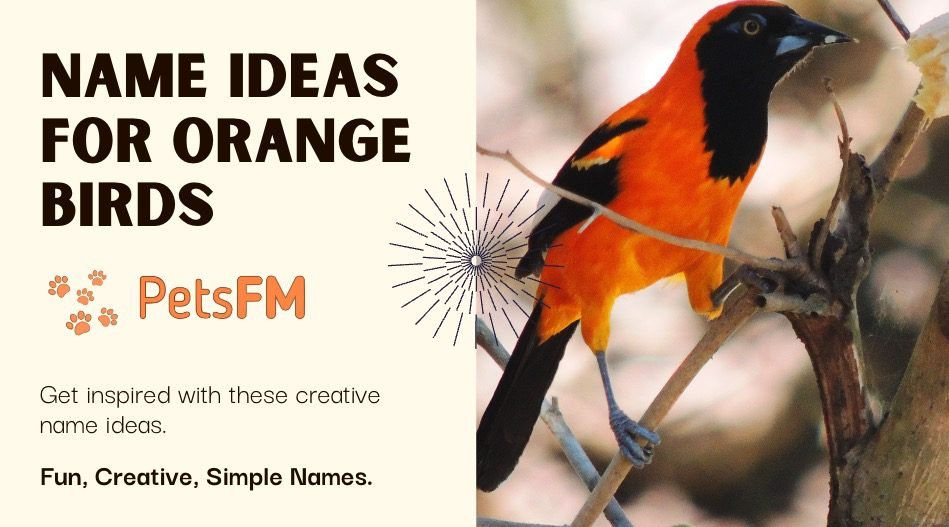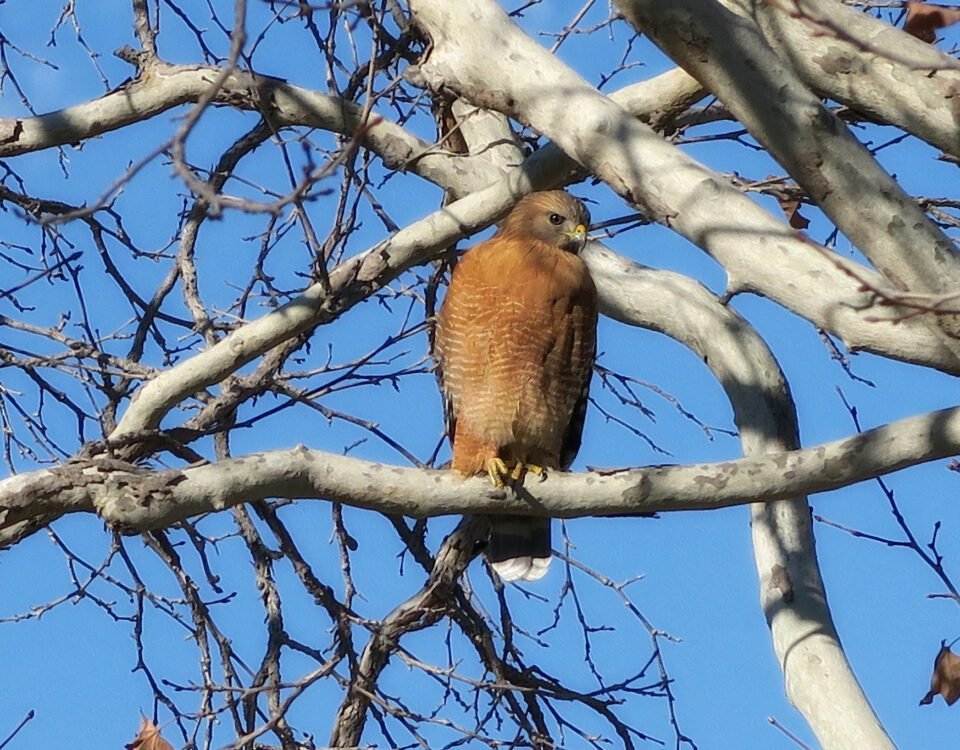


Why Do Birds Circle In The Air? (ANSWERED!)
September 13, 2023


Why Do Birds Eat Their Babies? How To Prevent It?
September 15, 2023While spending time with your domestic parrot, something peculiar may have caught your attention, a strange behavior where your beloved parrot lunges or attacks you.
This might be disconcerting for you, and you would undoubtedly be puzzled, asking yourself, “Why does my parrot lunge at me?”
If you’re wondering why this happens, don’t worry we have got you covered! This article will help you understand why this seemingly aggressive behavior occurs and provide insights into your parrot’s psyche.
Also Read: Why Do Birds Have Claws? The Real Reason Why!
Understanding Parrot Behavior
Parrots are known for their intelligence and curiosity. They possess an advanced level of problem-solving skills compared to many other bird species.
Providing mental stimulation through toys, puzzles, and training sessions can help satisfy their need for mental engagement and prevent boredom-related behaviors.


Parrot Behaviour
These brilliant creatures are also highly social animals. In the wild, they live in flocks and rely on social interactions for their well-being. This social nature influences their behavior in captivity as well.
Parrots crave attention and companionship, and when they don’t receive it, they may exhibit certain behaviors to communicate their needs.
Interesting Read: Is It True That Hitler Have a Parrot? [Know The Truth]
Possible Reasons Behind Parrot Lunging
Understanding the causes behind this behavior is the first step in addressing the issue, as it’s typically indicative of an underlying problem or need.
Let’s delve into some possible reasons behind parrot lunging.
1. Fear or Anxiety
The most common reason parrots lunge is due to fear or anxiety. Remember that these vibrant birds are prey species in the wild, thus their instinctual response is to defend themselves when threatened by unfamiliar or perceived danger.
For instance, if a parrot is kept in an environment with constant loud noises, such as construction work nearby, it may develop a heightened state of anxiety.
2. Defensive Behavior
Sometimes, a parrot might perceive you as a threat to something they value, like their nest box, cage, mate, or food. This behavior may cause parrots to swiftly lunge at you as a protective measure.
In such instances, lunging can be a defensive mechanism to protect their territories.
3. Hormonal Changes
Parrots, especially during breeding season, undergo hormonal changes that can affect their behavior and these changes can lead to increased territoriality, aggression, and a tendency to lunge.
For instance, male parrots may become more territorial and protective of their space during the breeding season, leading to lunging behavior when approached by anyone, including their owners.
Female parrots may also display similar behavior when they are nesting or have eggs.
4. Jealousy Factor
When they perceive a threat to their bond or attention from their owner, they may exhibit jealous behaviors, including lunging.
This behavior is often a way for the parrot to protect their perceived territory or resources. It is important for parrot owners to recognize and address jealousy in order to maintain a harmonious relationship with their pets.


Parrot Jealousy Factor
5. Lack of Socialization
If a parrot has not been properly socialized or has had limited exposure to different people and environments, it may exhibit lunging behavior. This can be a result of fear or discomfort when faced with unfamiliar situations or individuals.
For example, if a parrot has only been exposed to one or two people throughout its life, it may feel threatened or defensive when approached by someone new.
6. Dominance Asserting
This is a classic behavior seen in many parrot species and can stem from the bird wanting to communicate that they are the ‘leader of the pack’.
Their lunging is not necessarily a sign of aggression but can be an explicit demand for respect and an attempt to exert control over the situation.
7. Bad Past Experiences
If your parrot had adverse experiences in the past, particularly with humans, lunging can be a protective action.
This is particularly common in rescue parrots who have suffered trauma or abuse.
It’s crucial to remember that lunging doesn’t inherently mean your parrot is “bad” or “mean”. Often, it’s their way of communicating discomfort, fear, or doubt. Observing and understanding your parrot’s needs coupled with patience will contribute to a healthier bond and help mitigate lunging behavior.
Recognizing Signs of Stress in Your Parrot
Parrots often hide their stress due to their innate nature as prey animals, so it’s essential to keep a close eye on their behavior and physical demeanor.
Stress can manifest in a variety of ways in parrots which can often be subtle, but paying attention to these signs can help in preventing serious health issues and behavioural problems such as lunging.
1. Behavioral Changes
Any major shifts in your parrot’s behavior can be the first sign of stress. You might observe increased aggression, withdrawal, loss of appetite, or changes in their vocalizations.
Repeated actions such as biting, screaming, screeching, or lunging can also indicate elevated stress levels.
2. Physical Signs
Physical indicators can often accompany behavioral changes. Over-preening or feather plucking, weight changes, changes in coloration, or changes in posture are some of the most obvious physical signs of stress in parrots.
Other physical manifestations can include changes in their droppings, reduced preening, or rapid breathing. Keep a keen eye for any changes in their eyes, beak, feathers, or skin.


Parrot Closeup
3. Changes in Normal Routine
If your parrot is under stress, it may exhibit alterations in its daily habits. They may eat or sleep more or less than usual.
An increased sleep duration, difficulty falling asleep, or a change in the sleeping pattern can be indicative of stress. Likewise, a sudden lack of interest in food, even in their favorite treats, is a red flag.
4. Increased Aggression
A stressed parrot may become more aggressive. They might lunge at perceived threats or become less comfortable around family members or other pets. This can be a sign that they feel under threat or anxious.
Understanding Parrot Body Language
Understanding Parrot Body Language is crucial for anyone who owns a domestic parrot. By learning to interpret their body language, you can better understand their needs, emotions, and intentions and also why do they lunge at you.
- One important aspect of parrots’ body language is their feathers. When a parrot’s feathers are relaxed and smooth, it indicates that they are calm and content. On the other hand, if their feathers are fluffed up, it may suggest that they are feeling threatened or agitated.
- Another key element of parrot body language is their posture. A parrot that is standing tall with its feathers sleeked back is likely feeling confident and relaxed. However, if they are crouched down with their feathers puffed out, it could mean they are scared or defensive.
- Parrots also use their beaks to communicate. If a parrot’s beak is open and relaxed, it indicates a sense of calmness. However, if their beak is tightly closed or they are biting at the air, it may suggest aggression or fear.
- Similarly, their eyes can reveal a lot about their emotions. Flashing, and dilating pupils can be a sign of aggression or nervousness, or pleasure.
- Parrots also use their vocalizations and body movements to express themselves. Pay attention to the different sounds your parrot makes. Similarly, observe their body movements, such as head bobbing or wing flapping, as these can provide insights into their current state of mind.
The Influence of Diet on Parrot Lunge Behavior
Just like in humans, the type of diet a parrot consumes can greatly impact its behavior. Various nutritional deficiencies can lead to aggressive behaviors like lunging. Therefore, it’s crucial to provide your feathered friend with a balanced diet that meets all their nutritional needs.


A Parrot Eating Chilli
- One of the key factors that diet affects parrots is their energy levels. Parrots are highly active birds, and their diet should consist of foods that provide them with the necessary energy to engage in natural behaviors such as flying, climbing, and foraging.
- Certain foods, particularly those high in fat and carbohydrates, can disrupt a parrot’s hormonal system, leading to behavioral changes. For example, a diet rich in sunflower seeds, which are high in fat, can trigger hormonal imbalances in parrots, resulting in increased aggression and territorial behavior.
- Omega-3 fatty acids, found in foods like walnuts and flaxseeds, are known to support brain health and can contribute to improved cognitive function in parrots.
- A diet lacking in essential vitamins and minerals, particularly vitamin A and protein, can lead to dry, brittle feathers and skin issues. By providing a well-balanced diet that includes a variety of fresh fruits, vegetables, and high-quality pellets, parrot owners can help maintain their pet’s feather health.
Remember, providing a nutritious and varied diet is crucial for promoting good behavior and overall well-being in parrots. Consult with an avian veterinarian or a qualified avian nutritionist to ensure that your parrot’s diet meets its specific nutritional needs.
Building Trust with Your Parrot
Building a trusting relationship with your parrot is at the heart of preventing aggressive behaviors like lunging. It’s essential to understand, though, that trust is not instantaneous; it takes time and patience.
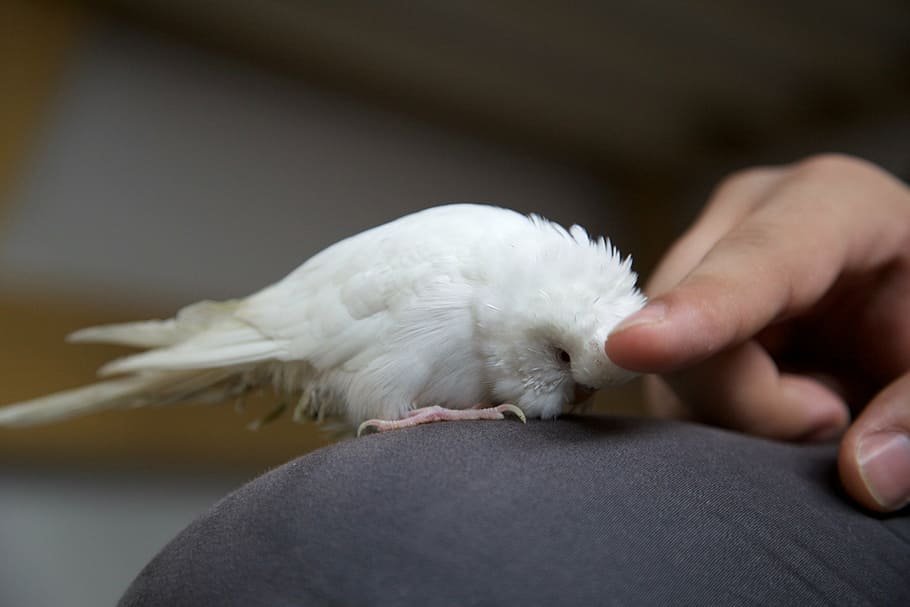

Building Trust with Parrots
1. Start Small
Begin with small, non-threatening interactions. A simple first step might be offering your parrot a treat from your hand. This non-invasive interaction can encourage a positive association between you and pleasant experiences.
2. Socialize, But Respect Boundaries
Parrots are social creatures. Regular, positive interaction forms the basis of a strong bond. Remember, however, that each parrot has its personality and boundaries. Always respect these. Being backed into a corner can lead to aggressive behaviors like lunging.
3. Consistency is Key
Consistency is critical in building trust. Regular routines and consistent responses can foster a sense of safety for your parrot, reducing the need for defensive behaviors.
4. Understand Their Perspective
Empathizing with your parrot can go a long way in building trust. Try to see the world from their eye level. Is there anything that might appear threatening? Are there high-stress areas in their environment? Address these and make your parrot feel safe and comfortable.
5. Have Patience
Patience is a virtue, especially with parrots. It may take time for your feathered friend to perceive you as non-threatening. But remember, perseverance pays in the long run. Persist with positive behaviors and interactions.
6. Be Positive and Receptive
Always approach your parrot with a calm demeanor and a positive attitude. Be receptive to their signals and responsive to their needs. They are intelligent birds capable of sensing negative energies, so maintain a positive presence.
To conclude, by offering a safe, healthy, and enriched living space for your parrot, you’re setting the groundwork for positive behavior, thus making instances of lunging less likely.
Editor’s Pick: Why Are Birds So Cute? 10 Reasons Why Birds Are Cutest
Tips for Managing Parrot Aggression
Providing a safe and stimulating environment for your parrot is fundamental to their physical and mental well-being. So, how can you ensure you’re creating the best setting for your pet bird?
1. Avoid Reacting Violently to Bites
Never react violently or jerk your hand away out of shock when your parrot bites, as this could inadvertently reinforce their behavior.
Instead, you should not pull away or react visibly. Over time, your bird will likely stop realizing that biting does not yield any exciting reaction.
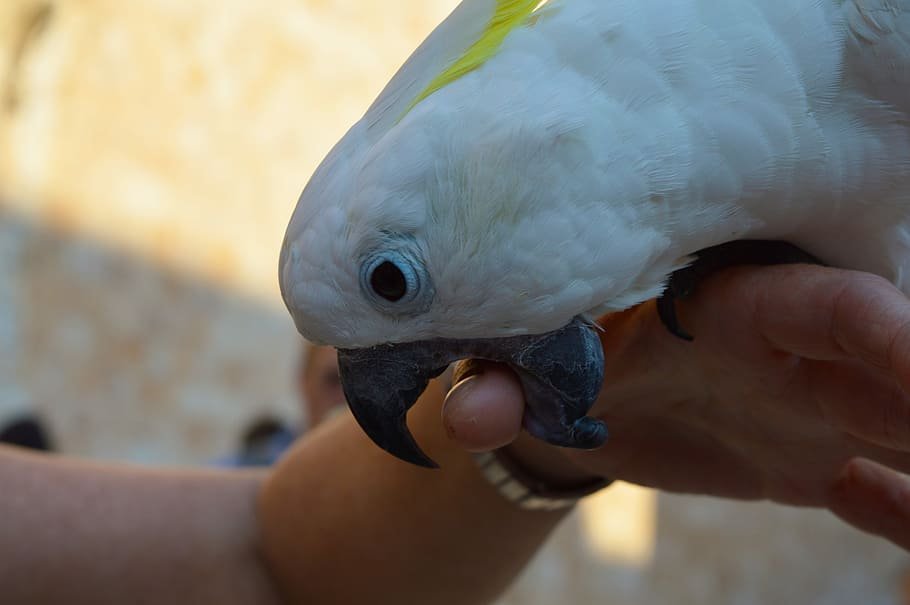

Parrot Biting
2. Don’t Punish Your Parrot
It can be frustrating when your parrot is behaving aggressively, but punishing them won’t help.
Contrary to reducing aggression, it could lead to increased fear and anxiety, provoking more aggressive behavior.
3. Regular Exercise and Social Interaction
Outside of the cage exercise under supervised conditions is vital for your parrot’s emotional health.
Interacting with your bird promotes bonding and can help relieve anxiety.
4. Choose the Right Cage
Ensure your parrot’s cage is spacious, safe, and comfortable. Parrots need enough space to move around, stretch their wings, and engage in natural behaviors such as climbing.
The cage should be made of a strong, nontoxic material with appropriate spacing between bars to prevent your parrot from getting stuck or escaping.
5. Use Positive Reinforcement
Lunging behavior can be managed and modified through positive reinforcement training techniques and by providing a stimulating environment for the parrot.
This positive reinforcement helps to condition your pet to associate good behavior with pleasant experiences, thereby reducing the likelihood of aggressive outbursts such as lunging.
Reward your parrot with treats, praise, or petting when it displays calm and friendly behavior.
6. Provide Plenty of Toys and Enrichments
Toys, especially those that encourage foraging, can help keep your parrot mentally stimulated and less likely to resort to negative behaviors.
The toys should be safe and appropriate for the parrot’s size and species.
It’s also key to remember that each parrot is unique, and what works for one bird may not work for another. If aggressive behavior persists, reaching out to a professional parrot behaviorist for help would be a good step forward.
Parrot Species Prone to Lunging Behavior
It’s important to remember that parrots are unique with distinct behavioral tendencies. However, some species are generally known to be more prone to lunging behavior.
This is not to say that all individuals within these species will exhibit this behavior, but rather there might be a higher tendency in these groups. Here are some of those:
African Grey Parrot


African Grey Parrot
African Greys are known for their intelligence and sensitivity, which can sometimes lead to aggressive behavior, including lunging.
The common reasons for lunging in these species include fear of a perceived threat or a lack of proper training and socialization.
Cockatoos


Cockatoos
Cockatoos can get quite dramatic and expressive when they feel threatened or aren’t given enough attention. It is believed that these birds can get jealous due to the bond they form with others.
Cockatoos are known for their unique and sometimes challenging behaviors, including lunging. Lunging behavior in these birds can be a result of various factors, such as fear, territoriality, or a desire for attention.
Macaws


Macaws
Macaws are naturally playful creatures but can resort to lunging if they feel compelled to protect their personal space or belongings. Remember, with understanding and care, lunging behavior can be managed irrespective of the bird species.
Amazon Parrots


Amazon Parrot
Amazon parrots are known for their strong personalities and can sometimes display aggressive behaviors, including lunging.
This species is highly territorial and may lunge at their owners or other people they perceive as a threat to their territory.
Conures
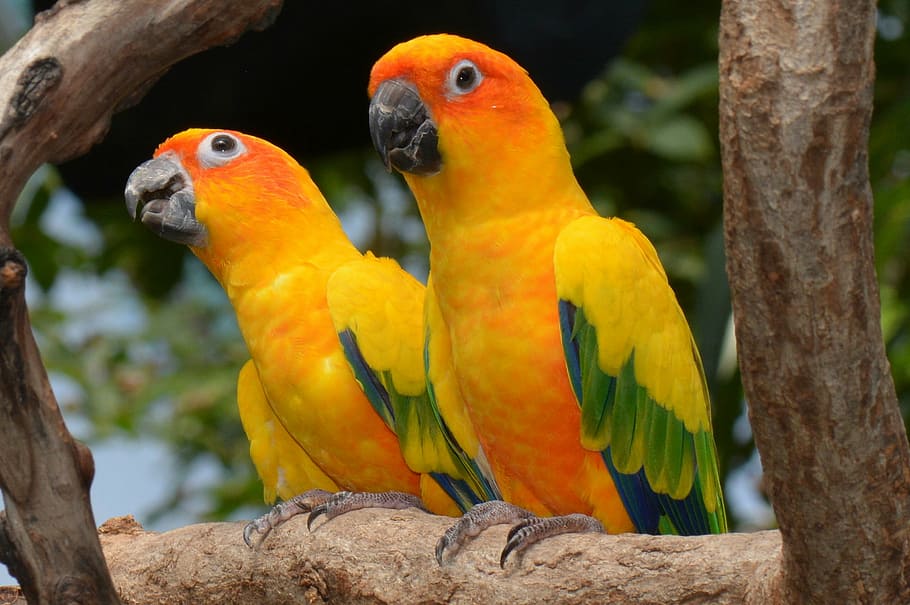

Conures
Conures are small to medium-sized parrots, highly energetic, and can become easily overstimulated or agitated.
Lunging may be a way for them to express their excitement or to protect their personal space.
Conclusion
Understanding why your parrot may lunge at you is a multifaceted exploration into its behavior, stress signs, body language, diet, and trust-building. While dealing with lunging can be challenging, understanding the root causes and establishing a solid relationship with your feathered friend can make a world of difference. Each parrot is unique, and with empathy, patience, and knowledge, it is entirely possible to build a mutually respectful, loving bond.
Read Next: How Do Birds Clean Themselves – Understanding Avian Hygiene
